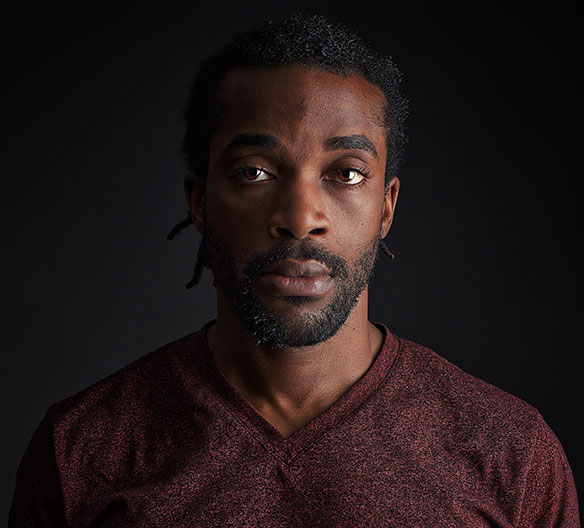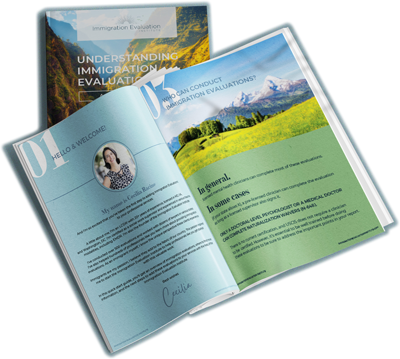What do you want to learn more about?
Racism and Mental Health

The consequences of racism can negatively impact self-concept and stifle the achievement of important life goals (Svetaz et al., 2018). What’s more, its effects on mental health can be devastating, manifesting in a range of conditions, including depression, anxiety, and PTSD.
These problems are compounded when we consider that BIPOC populations (black, indigenous, and people of color) have poorer access to mental health care and poor experiences as patients (Stanley et al., 2019). Lack of cultural competency in healthcare systems adds a further burden to existing traumas.
The evidence is clear. Racism hurts not only individuals and families, but also societies, and it’s a feature of our institutions.
This week’s blog post is Part 2 of our exploration into the themes of BIPOC Mental Health Awareness Month. In this week’s post, we will delve into the topic of racial trauma and consider its different manifestations across various ethnic and racial groups.
Racial Trauma
Racial trauma or racism-based traumatic stress (RBTS) refers to the cumulative impact of racism, which deteriorates the mental and physical well-being of individuals. In the U.S., BIPOC populations are at an exceptionally high risk of suffering from RBTS (Mental Health America, 2020).
Racial trauma occurs as a consequence of experiencing or witnessing real or perceived incidents of discrimination, fear for one’s safety, or humiliating events. Manifestations of RBTS can differ across cultures, but in general, the symptoms are similar to those of PTSD. The key difference is that RBTS involves exposure and re-exposure to race-based stress (as opposed to PTSD, which involves exposure to a broader scope of traumatizing events).
Racial trauma can be categorized into different types based on whether it stems from individuals or systems and whether it is a consequence of direct exposure to racism, vicarious exposure, or transmitted stressors (Mental Health America, 2020).
Individual Racism
Stems directly from people in the form of physical or verbal attacks. For example, 1500 cases of anti-Asian racism were reported in one month following the outbreak of COVID-19 in the U.S. (Asian Pacific Policy and Planning Council, 2020).
Systematic Racism
Occurs when racism is experienced within a broader system. For example, there is an overrepresentation of Black people in the prison population (FBI, 2019), which is the manifestation of racism in the criminal justice system.
Direct Traumatic Stressors
Refers to the direct impact of traumas on the lives of individuals who are on the receiving end of racist attacks. Micro-aggressions are examples of direct traumatic stressors. They are defined as short-term and routine incidents of verbal or physical humiliation that represent hostility or negative prejudicial disdain toward a social group—especially disempowered groups (Mental Health America, 2020).
Vicarious Traumatic Stressors
Refers to the indirect impact of trauma on the lives of people living with systematic or individual racism. An example is the witnessing of violence against BIPOC populations in the media or online (e.g., the killing of George Floyd).
Transmitted Traumatic Stressors
Refers to the impact of trauma that is transferred from one generation to the next. For example, Native Americans continue to experience symptoms of depression due to the traumatic psychological impact of massacres and forced removal (Designer, 2015).
Psychologists face many challenges while addressing racial trauma. BIPOC populations often remain exposed to racism, which may impact their healing. Further, due to their poor patient experiences in the past, BIPOC populations may be reluctant to trust and open up to medical professionals, creating barriers to receiving the ideal care.
Mental Health in Different Communities
Not all racial and ethnic communities experience racism in the same way. Each community will have different experiences, and therefore different needs.
Black and African American Communities
Black Americans face more trauma and violence compared to their White counterparts. There is a long history of dehumanization, oppression, and abuse against Black and African American communities. Additionally, current events in the media involving police brutality and other uncertainties risk adding to the existing burden for these individuals.
Due to poor patient experiences (and sometimes mistrust of healthcare systems), health-seeking behaviors of Black Americans are less than the general population, and these populations are more likely to turn to faith-based healing approaches (Mental Health America, 2020).
Latino/Latinx Communities
Latino/Latinx communities comprise diverse individuals who are considered different based on their ancestral history. They face unique institutional and systematic barriers in their path toward seeking mental health services. Mental health is sometimes regarded as a stigmatized topic in their communities, which can contribute to prolonged suffering in silence. Common mental health conditions include acculturation, trauma, and generational clashes (Mental Health America, 2020).
Asian/Pacific Islander Communities
Asian/Pacific Islander communities comprise a broad range of nationalities and identities. Each of these communities has unique experiences and challenges. The race-based issues that tend to impact mental health for these communities include perpetual foreign stereotypes, trauma, stigma, and religious intolerance. Persistent foreign stereotypes can contribute to feelings of loneliness when members of these communities are considered outsiders. For instance, Muslims and Sikhs often face discrimination based on their appearance and beliefs (Mental Health America, 2020).
Among Asian and Pacific Islander communities, trauma is most commonly experienced by first generations of immigrants, and mental illness can be stigmatized and impact health-seeking behaviors.
Native and Indigenous Communities
Native and indigenous communities are often targets of racism, and poor economic conditions may prevent them from seeking healthcare services. The symptoms of mental health issues for these populations sometimes do not meet diagnostic criteria because members of native and indigenous communities do not always distinguish between physical and psychological complaints. Members of these populations may therefore turn to spiritual healers for help with psychological issues (Mental Health America, 2020).
Closing Thoughts
As immigration evaluation therapists, we should always be sure to tailor our services to the needs of the groups we intend to serve. Doing so requires cultural competency to remain wary of how we communicate and customize standard interventions. While we may not be responsible for the ongoing therapeutic treatment of our clients, we can always be sure to connect clients to external sources of culturally relevant support and point them toward tools to help foster resilience.
If you’d like more reading, there are many frameworks and approaches we can draw on to help us when working with BIPOC populations, including the Healing Ethno and Racial Trauma (HEART) framework (Chavez-Dueñas et al., 2019) and the Racial Encounter Coping Appraisal and Socialization Theory (RECAST) Theory (Anderson & Stevenson, 2019). You can also find more resources on the Mental Health America BIPOC Mental Health Month webpage, and download their free toolkit.
For more information on how to get started with being an immigration evaluation therapist, check out my free resources.
References
Anderson, R. E., & Stevenson, H. C. (2019). RECASTing racial stress and trauma: Theorizing the healing potential of racial socialization in families. American Psychologist, 74(1), 63-75. https://doi.org/10.1037/amp0000392
Asian Pacific Policy and Planning Council (2020, April 24). In one month, STOP AAPI HATE Receives almost 1500 incident reports of verbal harassment, shunning and physical assaults [Press release]. http://www.asianpacificpolicyandplanningcouncil.org/wp-content/uploads/Press_Release_4_23_20.pdf
Chavez-Dueñas, N. Y., Adames, H. Y., Perez-Chavez, J. G., & Salas, S. P. (2019). Healing ethno-racial trauma in Latinx immigrant communities: Cultivating hope, resistance, and action. American Psychologist, 74(1), 49-62. http://dx.doi.org/10.1037/amp0000289
Designer, N. W. (2014, October 15). Examining the Theory of Historical Trauma Among Native Americans. Retrieved June 25, 2020, from https://tpcjournal.nbcc.org/examining-the-theory-of-historical-trauma-among-native-americans/
FBI. (2019, September 22). Table 43. Retrieved June 25, 2020, from https://ucr.fbi.gov/crime-in-the-u.s/2018/crime-in-the-u.s.-2018/tables/table-43
Mental Health America. (2020). Asian American/Pacific Islander Communities and Mental Health. https://mhanational.org/issues/asian-americanpacific-islander-communities-and-mental-health
Mental Health America. (2020). Black and African American Communities and Mental Health. https://mhanational.org/issues/black-and-african-american-communities-and-mental-health
Mental Health America. (2020). Latinx/Hispanic Communities and Mental Health. https://mhanational.org/issues/latinxhispanic-communities-and-mental-health
Mental Health America. (2020). Native and Indigenous Communities and Mental Health. https://mhanational.org/issues/native-and-indigenous-communities-and-mental-health
Mental Health America. (2020). Racial Trauma. https://mhanational.org/racial-trauma
Stanley, J., Harris, R., Cormack, D., Waa, A., & Edwards, R. (2019). The impact of racism on the future health of adults: protocol for a prospective cohort study. BMC Public Health, 19(346), 1-10. https://doi.org/10.1186/s12889-019-6664-x
Svetaz, M. V., Chulani, V., West, K. J., Voss, R., Kelley, M. A., Raymond-Flesch, M., et al. (2018). Racism and its harmful effects on nondominant racial-ethnic youth and youth-serving providers: A call to action for organizational change: The society for adolescent health and medicine. Journal of Adolescent Health, 63(2), 257–261. https://doi.org/10.1016/j.jadohealth.2018.06.003

I’m Cecilia Racine, and I teach therapists how to help immigrants through my online courses. As a bilingual immigrant myself, I know the unique perspective that these clients are experiencing. I’ve conducted over 500 evaluations and work with dozens of lawyers in various states. Immigrants are my passion, I believe they add to the fabric of our country.
related articles
Helping Immigrants Find Safety and Healing Through U and T Visas
As mental health clinicians, we possess a unique set of skills that can be a…
Expand Your Expertise: Recommended Trainings for Immigration Clinicians
The Immigration Evaluation Institute Comprehensive course is a great first step into the world of…
Ethical Considerations in Immigration Evaluations
The role of mental health professionals in immigration evaluations is fraught with unique ethical complexities.…
Join the Free
Immigration evaluation
therapists facebook group
Are you a therapist that conducts immigration evaluations?



